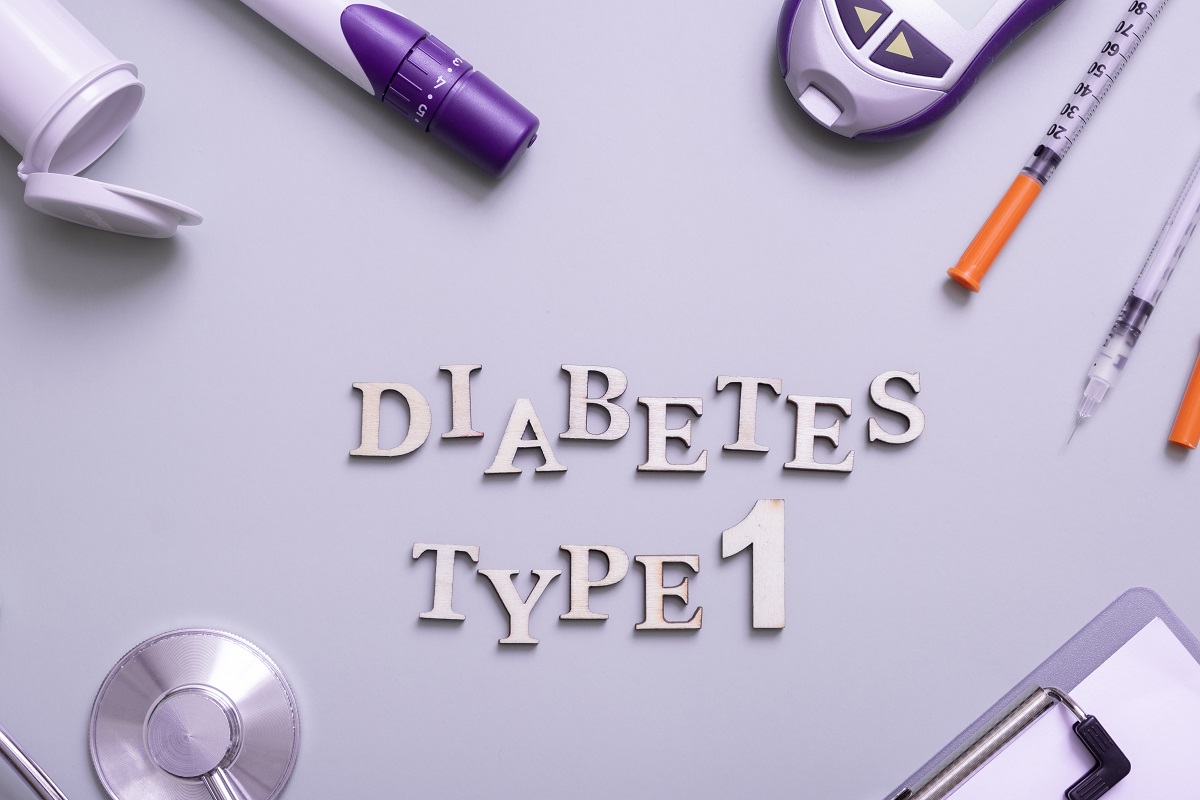A chronic condition in which the pancreas produces little or no insulin at all is called Type 1 diabetes. Other names for this condition are juvenile diabetes or insulin-dependent diabetes. A hormone that helps glucose (sugar) to enter cells and produce energy is called insulin. The primary causes of this diabetes type are genetics and some viruses. In most cases, type 1 diabetes appears during childhood or adolescence but it can occur in adults too.
Unfortunately, there is no way to cure this diabetes type, and all treatment options are directed toward lessening the symptoms and improving the quality of life. The most common treatment options include lifestyle changes, medicines, and diet.
Symptoms
Type 1 diabetes symptoms usually appear suddenly. Examples include:
- Vision changes (such as blurred vision)
- Weakness
- Tiredness
- Mood changes (such as irritability)
- Unexplained weight loss
- Feeling very hungry
- Bet-wetting (children)
- Increased urination
- Thirsty
If you or your child experience any of the symptoms listed above, immediately contact your healthcare professional.
Causes
Experts still do not know the exact cause of type 1 diabetes. Sometimes, the immune system attacks insulin cells in the pancreas instead of viruses and bacteria. Other potential causes include genetics, exposure to viruses, and other environmental factors.
What is The Role of Insulin?
The pancreas is an organ that produces insulin and it is located under the stomach. In case the insulin cells are destroyed, the body cannot produce insulin.
- When the pancreas releases insulin it goes into the bloodstream.
- This hormone travels throughout the body and helps glucose enter the cells and reduce sugar levels in the bloodstream as well.
- However, as levels of blood sugar drop as little insulin the pancreas produces and releases into the bloodstream.
What is The Role of Glucose?
This is the main source of energy for cells that muscle and other tissues consist of.
- There are two primary glucose sources such as food and the liver.
- Glucose enters into the bloodstream and then into cells with insulin help.
- Furthermore, the liver can store the glucose (glycogen).
- After that, if you do not have enough glucose in the blood, the liver breaks down the glycogen and helps to maintain blood sugar levels within normal ranges.
People with type 1 diabetes do not have insulin and extra sugar in the blood begins to build up in the blood vessels. Thus, it can provoke life-threatening complications.
Risk Factors
- Family history – You are more likely to get type 1 diabetes if a parent or sibling has it.
- Genetics – This condition can pass from biological parents to biological children.
- Geography – Some research showed that people tend to have type 1 diabetes as they travel away from the equator.
- Age – This diabetes type can occur at any age but it is mostly diagnosed between 4-7 years old and 10-14 years old.
Complications
If you do not treat this condition over time, it can negatively affect different body organs. For example, the heart, blood vessels, nerves, and kidneys. Keeping blood sugar within normal ranges can reduce the risk of complications. Check below some of them:
- Heart and blood vessel disease – The risk you will develop a heart or blood vessel disease increases in people with diabetes. The most common diseases include coronary artery disease with chest pain, myocardial infarction, stroke, atherosclerosis (narrowing of the blood vessels), and hypertension.
- Nerve damage (neuropathy) – Elevated levels of blood sugar can damage the blood vessels that feed the nerves. As a result, tingling, numbness, burning, or pain can occur. Over time, it may lead to loss of senses in the affected limbs. Additionally, nerve damage can also provoke digestive problems including nausea, vomiting, diarrhea, and constipation. Sometimes, men can experience erectile dysfunction.
- Kidney damage (nephropathy) – The kidneys have many small blood vessels that help get rid of waste and toxins from blood. However, diabetes can damage these blood vessels, which leads to kidney failure. Once a person experiences end-stage kidney disease the only treatment options possible are kidney dialysis or transplantation.
- Eye damage – In case diabetes damages blood vessels in the eye, it may lead to serious eye disorders. These include cataracts, glaucoma, diabetic retinopathy, and others.
- Foot damage – Some foot complications can happen due to glucose that builds up in the feet’s blood vessels. If you ignore this complication, you may notice a serious infection that sometimes needs amputation.
- Mouth and skin diseases – Bacterial and fungal infections are more likely to develop in people with diabetes.
- Pregnancy complications – Increased levels of blood sugar can be dangerous for both mother and baby. For instance, the risk of stillbirth, birth defects, and miscarriage elevates. Moreover, a pregnant woman with diabetes is also more prone to develop diabetic eye problems, diabetic ketoacidosis, preeclampsia, and others.
Is it Possible to Prevent Type 1 Diabetes?
Nowadays there is no way to prevent this diabetes type. However, researchers work on how to prevent the condition or further damage to insulin cells. Discuss with your healthcare professional for more details.
Diagnosis
Check below some tests used by doctors to diagnose type 1 diabetes:
- Glycated hemoglobin (A1C) test – This is a test that helps doctors see the average blood sugar level for the last 2-3 months. Therefore, if the level of A1C is 6.5% or higher, it means you have diabetes.
However, the A1C test cannot be used every time because of some factors that make this test inaccurate. These include pregnancy and an uncommon form of hemoglobin. In such cases, physicians usually perform the following tests. For example:
- Random blood sugar test – This test can be done at any time and be confirmed by other additional tests. In addition, the blood sugar values are measured in milligrams per deciliter (mg/dL) or millimoles per liter (mmol/L). In case after testing your blood sugar level is 200 mg/dL or 11.1 mmol/L or higher it means you have diabetes no matter what you last ate.
- Fasting blood sugar test – In such cases, the blood sugar test is taken after not eating anything overnight. In case the test shows you have 126 mg/dL or 7 mmol/L, it means you have diabetes.
Treatment
The primary treatment for type 1 diabetes includes:
- Taking insulin
- Monitoring regularly blood sugar
- Limiting carbohydrates, fats, and protein
- Adopting healthy diets
- Regular exercising and maintaining a healthy weight
The treatment goal is to keep blood sugar within normal ranges as much as possible. It will help to prevent or avoid complications.
Anyone with diabetes needs insulin therapy during their lifetime. Check below some insulin types:
- Short-acting insulin – It is also called regular insulin and it begins working within 30 minutes after injection. The duration of this insulin type is usually 4-6 hours.
- Rapid-acting insulin – It begins working within 15 minutes and lasts approximately 4 hours. Most people use this insulin type roughly 20 minutes before a meal.
- Intermediate-acting insulin – This insulin type is also known as NPH insulin and it begins working between 1-3 hours. This insulin type lasts up to 24 hours.
- Long- and ultra-long-acting insulin – It is usually used before bedtime or in the morning to maintain a steady blood glucose level all the time. The duration of this type of insulin is up to 40 hours.
Frequently Asked Questions
What is the primary cause of type 1 diabetes?
Healthcare providers think the main type 1 diabetes causes include genetics, certain environmental factors, and viruses. However, more research is needed.
What foods should avoid people with type 1 diabetes?
- Fried foods, especially those high in saturated fats and trans fats
- Juice drinks
- Soda
- Sweet treats (including cakes, biscuits, pastries, and candies)
- Sugary breakfast cereals
- Refined grains (such as pasta, rice, and white bread)
- Added sugars
Talk with your healthcare professional for more details.
Is it possible to cure type 1 diabetes?
However, it is not possible to cure this health condition. Early diagnosis and treatment can help to lessen the symptoms, prevent complications, and improve your quality of life. If you suspect you have type 1 diabetes, you should visit a doctor. In case you have additional questions, ask your healthcare professional.




